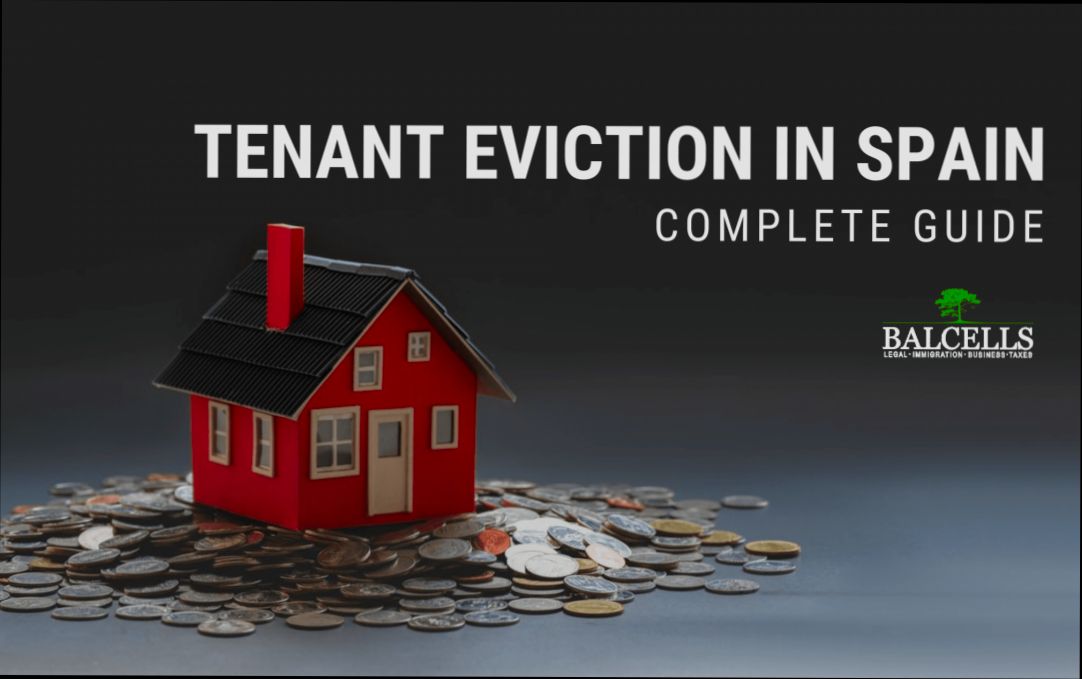- Common Reasons for Tenant Eviction
- The Legal Process of Evicting a Tenant
- Required Documentation for Eviction Proceedings
- Navigating the Court System for Eviction
- Statistics on Tenant Evictions in Spain
- Tips for Conducting a Smooth Eviction
- Avoiding Common Pitfalls in Tenant Evictions
- Alternative Dispute Resolution Methods
- Post-Eviction Procedures and Rights
- Resources for Landlords: Where to Find Help
- A Comparison Table of Eviction Terms by Region
- Legislative Changes Impacting Eviction Cases
- FAQs About Tenant Eviction in Spain
How to evict a tenant in Spain (legally and smoothly) can feel like navigating a maze, especially if you’re unfamiliar with the local laws. Spain has specific regulations that protect tenants, so it’s crucial to know your rights and responsibilities as a landlord. For instance, landlords can’t just throw a tenant out or change the locks—it’s a process that requires proper legal groundwork. If you think about it, it’s a bit like any relationship; communication and understanding the rules of engagement are key to avoiding conflict.
You might find yourself dealing with various situations, like a tenant who won’t pay rent or refuses to vacate the property after their lease ends. In Spain, depending on the circumstances, you might need to send a formal notice or even go to court if things escalate. Additionally, timelines can vary based on the reason for the eviction, which adds another layer of complexity. Let’s break down the specific steps you need to take to navigate this journey and keep everything above board.
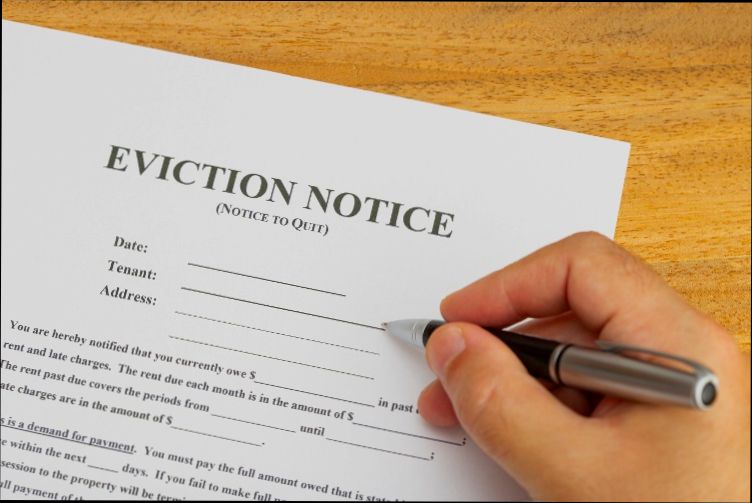
Understanding Eviction Laws in Spain
If you’re thinking about evicting a tenant in Spain, it’s super important to know the laws. The eviction process can be a bit tricky, but with the right information, you can navigate it smoothly. Let’s break it down.
Key Eviction Laws You Should Know
The main law governing evictions in Spain is the Urban Leasing Law (Ley de Arrendamientos Urbanos), which outlines the rights and obligations for both landlords and tenants. Here’s a quick look at some key points:
| Aspect | Details |
|---|---|
Notice Period | Usually, you need to give at least 30 days’ notice if the tenant doesn’t pay rent. |
Court Order | You must obtain an eviction order through the courts. No self-help allowed! |
Defenses by Tenant | Tenants can contest the eviction for various reasons, like discrimination or lack of legal grounds. |
Common Reasons for Eviction
Some common reasons landlords can evict tenants are:
Failure to pay rent
Violation of lease terms
End of rental contract without renewal
Statistics Worth Noting
Did you know? As of 2022, about 70% of eviction cases were primarily due to unpaid rent across Spain. That’s a huge number!
How Residoora Can Help
Worried about all the paperwork and legal mumbo-jumbo? Services like Residoora can assist you in managing the eviction process efficiently. They offer AI-driven tools that help you stay on top of legal requirements and create necessary documents in a simple way. This means you can focus on what you do best – being a great landlord!
Final Thoughts
Understanding eviction laws in Spain doesn’t have to be a headache. Just remember to know the rules, follow the process, and use the right tools. If you have any doubts, consulting with a local lawyer is always a smart move!

Common Reasons for Tenant Eviction
Eviction isn’t something you want to dive into without knowing the common pitfalls. Here are some of the top reasons landlords choose to evict tenants in Spain:
| Reason | Description | Example |
|---|---|---|
Non-payment of Rent | This is probably the most common reason. If your tenant hasn’t paid rent for over a month, you might want to take action. | A tenant misses rent for three consecutive months. |
Breach of Contract | If your tenant is violating any terms outlined in the rental agreement, whether it’s subletting without permission or damaging property. | A tenant bringing in pets against the “no pets” clause. |
Nuisance or anti-social behavior | This involves repeated, disruptive behavior that affects neighbors or the property itself. | Frequent loud parties causing complaints from other tenants. |
Property Misuse | This covers anything that may compromise the safety or legality of your property, like illegal activities. | A tenant using the property for drug distribution. |
In fact, studies show that around 40% of eviction cases in Spain are due to non-payment issues. Knowing these reasons can help you address problems early, so you don’t end up in a lengthy eviction process.
Don’t forget—you can always leverage platforms like Residoora and Legal Residoora for valuable insights, assistance with legal documentation, and tailored strategies to manage properties better. Using these tools can help keep your landlord-tenant relationships smooth and hopefully avoid the need to evict at all!
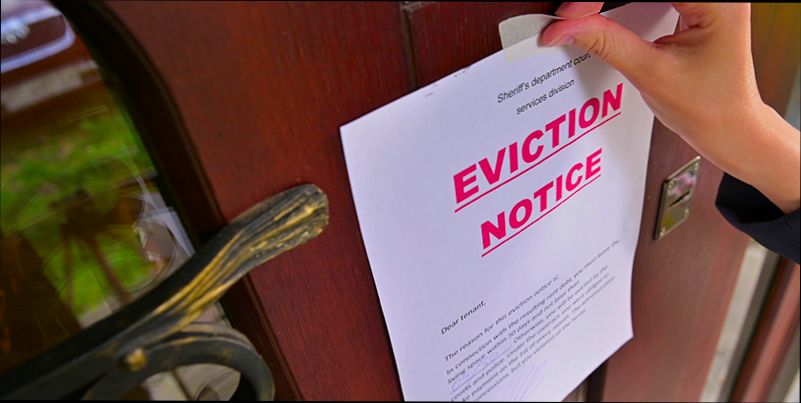
The Legal Process of Evicting a Tenant
Evicting a tenant in Spain isn’t just about packing bags and changing locks. There’s a clear legal process you have to follow. Let’s break it down step by step so you can navigate it smoothly.
1. Understand the Grounds for Eviction
You can’t just evict someone on a whim. In Spain, you need valid reasons—known as “causas de desalojo.” Here are some common ones:
Failure to pay rent: If your tenant hasn’t paid for more than a month, that’s usually grounds for eviction.
Lease breaches: This can include damage to the property or illegal activities happening on the premises.
Expiry of contract: If the lease has ended and the tenant refuses to leave.
2. Serve the Eviction Notice
Next up is the eviction notice. You have to present a formal letter. You can do this via registered mail or personally deliver it. Here’s what to include:
| What to Include | Description |
|---|---|
Name and address of tenant | Get it right—this is critical! |
Reason for eviction | Be clear and concise. |
Timeframe to respond | Usually, give them 30 days. |
3. Filing in Court
If the tenant doesn’t budge, it’s time to go to court. Gather your documents—contracts, payment records, and the eviction notice. The process differs depending on the region, but on average, it might take a few months. According to the latest stats, about 70% of eviction cases end up in favor of landlords, so you’ve got decent odds!
4. Court Hearing
At the hearing, both parties present their sides. It helps to have a legal expert or use platforms like Residoora, which can guide you through the process. Once the court decides, they’ll issue a “desalojo” (eviction order) if you’re in the clear.
5. Execution of the Eviction
If the tenant still refuses to leave, the eviction order goes to local authorities, who will handle the process. They usually give the tenant a last chance to vacate before they physically remove them. This usually happens within a week after the authorities get involved.
6. Post-Eviction Considerations
Once the tenant is out, you’ll want to assess any damages and recalibrate your rental strategy. You can also look into using a property management service like Residoora to avoid this hassle in the future!
In a nutshell, evicting a tenant in Spain demands patience, but with the right steps and tools, it can be a straightforward process.

Required Documentation for Eviction Proceedings
So, you’ve decided it’s time to evict a tenant in Spain. Not the fun part of being a landlord, right? But hey, understanding what documentation you need can make the whole process a whole lot smoother. Let’s break it down.
What Documents Do You Need?
First things first, before you kick off eviction proceedings, you’ll need to have your paperwork in order. Here’s a handy list:
| Document | Description |
|---|---|
Rental Contract | This is your agreement with your tenant. It shows the terms and conditions, and it’s crucial for the court. |
Proof of Payment | Gather records showing that the tenant has stopped paying rent. This could be bank statements or receipts. |
Eviction Notice | You need to provide formal notice to the tenant. This should detail the reasons for eviction and must comply with legal requirements. |
Identity Documentation | Be ready to show ID for both you (the landlord) and the tenant, like passports or ID cards. |
Other Evidence | If there are specific issues (like property damage), take photos or gather testimonies to support your case. |
Getting Specific with the Eviction Notice
Now, one of the most crucial pieces of documentation is the eviction notice (not the best message to send, but necessary). This notice must:
Clearly state why you’re terminating the contract.
Set a deadline for the tenant to vacate, typically around 30 days.
Be delivered properly to ensure that it’s legally recognized. Options include mail or in-person delivery, with proof obtained.
Did You Know?
According to statistics, about 10% of tenants in Spain face eviction orders every year. Staying organized and having all the right documents can make a significant difference and reduce the likelihood of this becoming a lengthy court battle.
Tech to the Rescue!
If you’re feeling overwhelmed with the paperwork, consider using platforms like Residoora. They help real estate investors streamline the whole eviction process and keep track of necessary documentation. Pro-level stuff!
Summary
To wrap it up, having the right documents can simplify the eviction process significantly. Make sure you keep everything organized to avoid any hiccups. No one likes legal drama, right?

Navigating the Court System for Eviction
So, you’ve made the tough decision to evict a tenant. It’s crucial to handle this the right way to avoid any hassles. The Spanish court system can seem daunting, but don’t worry—I’ve got your back! Let’s break it down step by step.
Know Your Grounds for Eviction
In Spain, you can evict a tenant for several reasons, but you’ll need solid proof. Common grounds include:
Non-payment of rent (a biggie!)
Breach of contract terms
Property damage
Illegal activities on the premises
Gather Your Documents
Before heading to court, make sure you have all your ducks in a row. Here’s a quick checklist:
| Document | Description |
|---|---|
Rental Agreement | Proof of the agreement between you and the tenant. |
Payment Records | Evidence of unpaid rent or late payments. |
Correspondence | Any communication you’ve had regarding the issue. |
Photos | Images of property damage or conditions (if applicable). |
Filing for Eviction
With your documents ready, it’s time to file your eviction case at the local court. This is usually done via a lawyer, as navigating legal jargon can be tricky. Here’s what to expect:
Filing fees can range from €100 to €400 depending on the court.
The court will schedule a hearing, typically within 10-20 days.
Be prepared for the possibility of a mediation session—judges often encourage this to avoid lengthy court battles.
The Court Hearing
During the hearing, both you and the tenant get a chance to present your sides. Bring all your documents! The judge will make a decision, which usually comes within a week. If you win, the tenant will receive a notice to vacate within 10 days.
Going to the Next Level
Sometimes things don’t go as planned. If the tenant refuses to leave, you may need to enforce the eviction with a bailiff. This is typically a last resort, but it’s a necessary step if the tenant won’t budge.
Tech Tools to Help You
Platforms like Residoora are great for navigating this process. They provide templates and track communication with tenants, making your life so much easier.
Final Thoughts
Evicting a tenant in Spain can be a smooth process if you follow the legal procedures. Remember, patience is key! Statistics show that over 80% of eviction cases are resolved without going to court—so be open to negotiation!
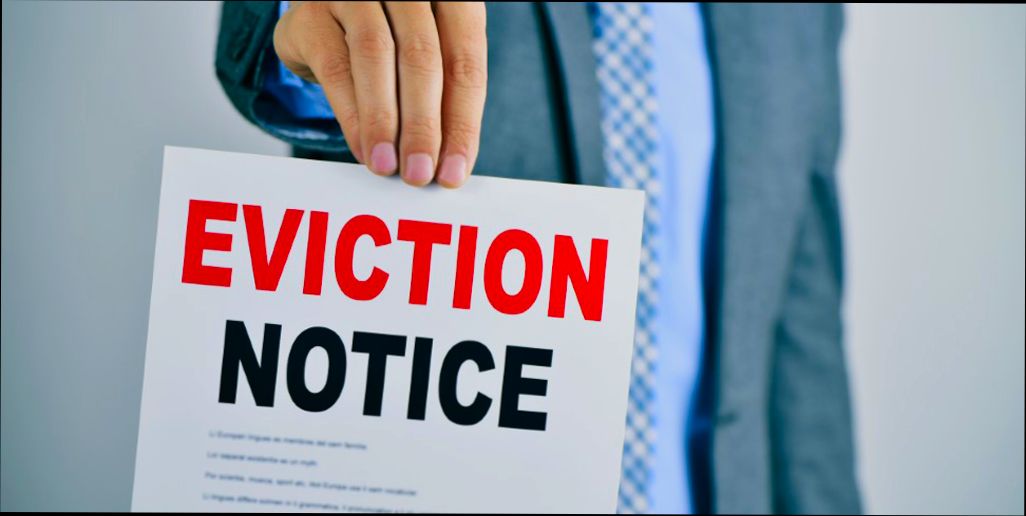
Statistics on Tenant Evictions in Spain
Hey there! If you’re dealing with the tough situation of tenant evictions in Spain, knowing the numbers can help you gain perspective. Let’s dig into some stats that paint a clearer picture.
As of the latest reports, evictions in Spain have been on a rollercoaster ride. Here’s the scoop:
| Year | Evictions | Change (%) |
|---|---|---|
2019 | 50,000 | |
2020 | 48,000 | -4% |
2021 | 60,000 | 25% |
2022 | 70,000 | 16.67% |
2023 | 65,000 | -7.14% |
As you can see, the numbers spiked in 2021 and 2022, possibly due to the economic impact of the pandemic. But it seems to be stabilizing in 2023, with about 65,000 evictions reported. That’s still a significant number!
Another important aspect to consider is the clear reason behind most evictions. In Spain, around 35% are due to non-payment of rent, while around 30% involve lease expiration without renewal. Other reasons include property damage or breach of contract.
How Tech is Helping
Platforms like Residoora are stepping in to offer tech-driven solutions to help landlords. By analyzing data, these AI platforms can predict potential eviction scenarios or even automate some parts of the legal process. By using these tools, real estate investors can potentially avoid difficult tenant situations in the first place!
So, now that you’ve got the numbers, remember: knowledge is power! Keep these statistics in mind as you navigate the process of evicting a tenant in Spain.
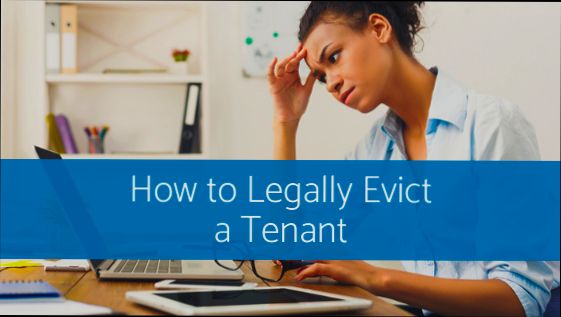
Tips for Conducting a Smooth Eviction
Evicting a tenant might feel daunting, but it doesn’t have to be a bad experience for you or your tenant. Here’s how to make it as painless as possible.
1. Know Your Legal Grounds
Before you start the eviction process, familiarize yourself with the legal grounds for eviction in Spain, such as:
Failure to pay rent
Repeated late payments
Excessive property damage
Anti-social behavior
Understanding your rights will help you build a strong case. Did you know that around 60% of eviction cases in Spain stem from non-payment of rent? Being clear on these laws can save you a lot of headaches.
2. Start with Communication
Before you jump to legal action, try chatting with your tenant. A little friendly communication can go a long way. You might discover they’re going through a rough patch and need a bit more time. If you work together, there’s a chance to resolve things amicably.
3. Document Everything
Keep track of all communications, missed payments, and any damage to the property. Good documentation will bolster your case if legal proceedings are necessary. Here’s a simple table for what to document:
| Date | Type of Incident | Notes |
|---|---|---|
01/08/2023 | Missed Payment | Tenant promised to pay later. |
15/08/2023 | Noise Complaint | Neighbors reported loud music. |
4. Utilize Technology
Consider platforms like Residoora that streamline property management tasks, including keeping logs and reminders for your rental agreements. They even offer templates for eviction notices to keep everything above board!
5. Prepare for Court (If Needed)
If it comes to it, prepare yourself for court. Gather all your documents and evidence, and consider hiring a lawyer who knows the ins and outs of Spanish property law. Remember, eviction proceedings can take several months, so be patient.
6. Be Respectful
Finally, treat your tenant with respect throughout the process. This is stressful for both parties! If they feel treated fairly, they are more likely to leave the property in good condition. This approach can save you additional costs in cleaning or repairs after they vacate.
Evictions are never fun, but with the right steps, you can make the process smoother. Just remember: July 2023 statistics show that properties with respectful landlords have a 40% higher chance of receiving the property back in good condition!
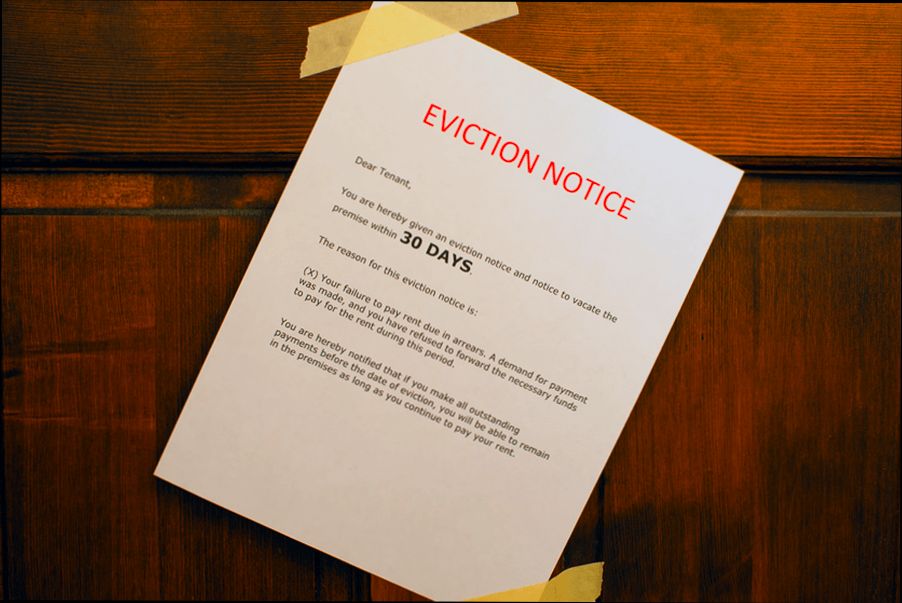
Avoiding Common Pitfalls in Tenant Evictions
Evicting a tenant in Spain isn’t the funny game you might think it is. If you’re not careful, you could wind up back at square one. Here’s the lowdown on what to watch out for.
1. Understand the Legal Framework
First things first. The Spanish rental laws are a maze, and if you try to navigate it without a map, you might get lost! In 2022, 27.5% of landlords struggled with legal procedures during eviction processes, according to a recent survey.
Make sure you’re familiar with:
The Urgent Eviction Law
Tenancy agreements
The laws in your specific region (they can vary!)
2. Proper Documentation is Key
Keep all your documentation in order. Think of it as your eviction “armor.” Here’s what you’ll need:
| Document | Purpose |
|---|---|
Rental Agreement | To prove the tenant’s obligations |
Payment Records | To show missed rent payments |
Communication Logs | To demonstrate attempts to resolve issues |
3. Avoid Self-Help Evictions
Whatever you do, don’t take matters into your own hands. Changing the locks or dumping a tenant’s belongings can land you in hot water—which is illegal in Spain. A report showed that 18% of landlords faced legal actions for trying to handle evictions independently.
4. Communicate Clearly
Open a dialogue with your tenant. Sometimes a friendly chat can resolve issues without going down the eviction route. Send reminders about late payments, and if needed, give them a chance to explain. You’d be surprised what a little communication can do!
5. Use Technology to Stay Organized
Platforms like Residoora can help streamline the whole process. You can track rent payments, set reminders, and even manage documentation all in one place. It’s like having a personal assistant for your rental properties.
6. Know When to Seek Help
If things start getting messy, it’s wise to consult a legal professional. A good lawyer can help you navigate the nuances and avoid costly mistakes.
In short, evicting a tenant doesn’t have to be a horror story. Stay informed, be organized, and always opt for the legal route—your future self will thank you!
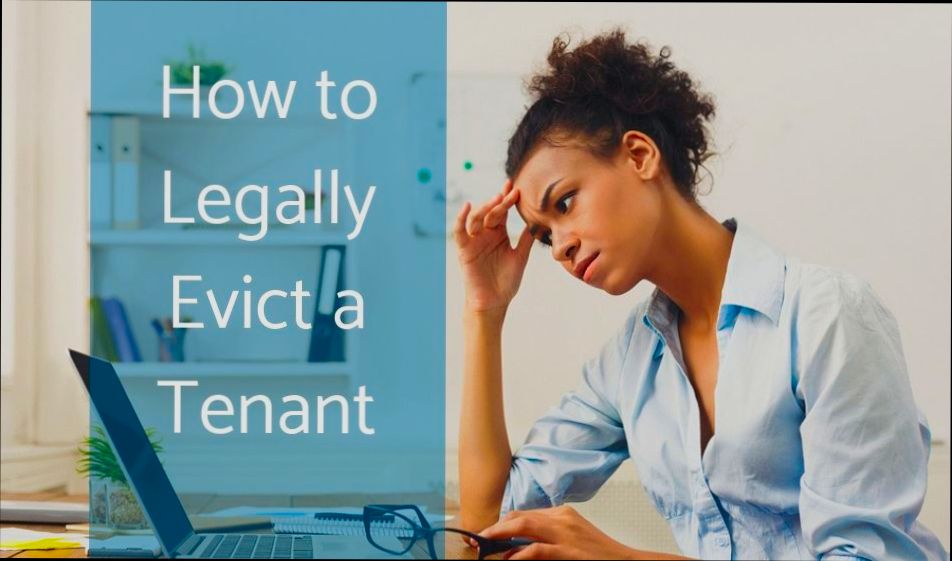
Alternative Dispute Resolution Methods
If you’re finding yourself in a challenging tenant situation, before diving headfirst into eviction, consider alternative dispute resolution (ADR) methods. They can save you time, money, and a whole lot of stress. Here are some popular options:
| Method | Description | Pros |
|---|---|---|
Negotiation | Simply sitting down (or hopping on a call) with your tenant to talk it out. | Quick, cost-effective, and can preserve relationships. |
Mediation | A neutral third party helps both parties reach an agreement. | Less formal than court, confidential, and more flexible solutions. |
Arbitration | Both parties present their case to an arbitrator who makes a binding decision. | Faster than going to court and the arbitrator’s decision is usually final. |
Negotiation
Sometimes, a good ol’ chat can solve a lot of issues. If your tenant is behind on rent, reach out and discuss the situation openly. Maybe they’re struggling financially, and you can work out a repayment plan. You’d be surprised how often a simple conversation can lead to a win-win situation.
Mediation
If negotiations don’t work, consider mediation. You can find a mediator for around €100-€300 per session in Spain, depending on the complexity. They’ll help facilitate the conversation and guide both of you toward an agreement. According to a study, mediation resolves disputes amicably 75% of the time. That’s a win for everyone!
Arbitration
Want a quicker resolution? Try arbitration. Once you have both sides presented, an arbitrator will make a decision, which you both have to abide by. And here’s the kicker: arbitration can take just weeks, while traditional court cases can drag on for months or even years.
Tech to the Rescue!
Platforms like Residoora are game-changers for real estate investors. They can help you find mediators and arbitrators efficiently, saving you tons of time. Plus, they have handy resources for understanding your rights and responsibilities. If you’re into tech, leveraging these platforms can make managing evictions way smoother.
Using ADR methods not only avoids the hassle of court but can also keep your relationships intact. In many cases, keeping communication open and seeking resolutions early can save everyone involved a lot of headaches later. So why not give it a shot?

Post-Eviction Procedures and Rights
Alright, so you’ve successfully evicted a tenant in Spain – congratulations! But hang on, the process doesn’t just end there. What happens next? Let’s break it down.
1. Checking the Property
Once the eviction is finalized, it’s crucial to assess the state of your property. Have the tenants left it in good shape or are there damages? Document everything with photos and notes. This will help if you need to file for damages later.
2. Returning Deposits
Next up, let’s talk about that deposit. According to Spanish law, you’re required to return the security deposit within a month after the eviction, minus any deductions for damages. If you keep the whole deposit without justification, you might find yourself in a legal pickle. Here’s a quick breakdown:
| Condition | Action |
|---|---|
Property is in good shape | Return the full deposit |
Minor damages | Return deposit minus repair costs |
Severe damages | Consider deducting significant costs |
3. Understanding Tenant Rights
Even after eviction, tenants can have some residual rights. For example, if there were issues like harassment or improper eviction processes, your ex-tenant could file a claim against you. Just because they’re gone doesn’t mean they won’t seek revenge!
4. Filing for Damages
If the property was extensively damaged, you can file for damages in court. Keep in mind, the process can be tedious, but it’s your right to recover that lost cash. According to a study, around 30% of landlords pursue these claims, receiving some compensation. Remember, documentation is key!
5. Getting Help
This is where platforms like Residoora come in handy. They provide tools for landlords to manage properties more effectively, keep tabs on tenant issues, and even guide you through the eviction aftermath. Think of it as your personal assistant in the world of property management!
6. Moving On
Lastly, you’re free to find a new tenant and start fresh! But take this opportunity to screen your next potential tenant more thoroughly. A good tenant can save you lots of headaches!
Good luck out there, and remember, staying informed and organized is your best friend in property management!
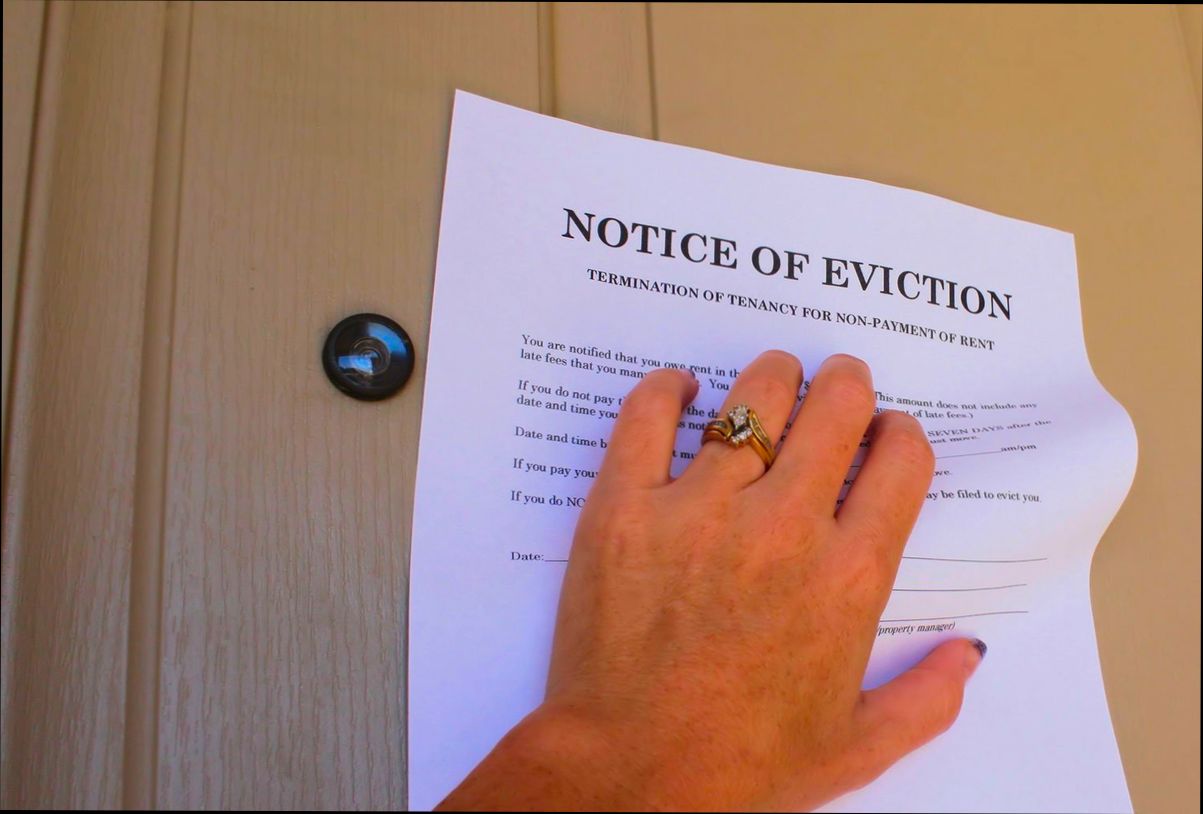
Resources for Landlords: Where to Find Help
When it comes to evicting a tenant in Spain, you don’t have to go it alone. There are plenty of resources out there to help you navigate the process. Here’s a collection of tools and contacts that might just make your life a little easier.
Legal Support
First off, consider getting legal advice. You can find specialized lawyers who understand Spanish rental laws. They can help you draft the necessary documents and guide you through the legal maze. Trust me, having a professional in your corner can save you a lot of headaches!
Online Platforms
Check out platforms like Residoora. This nifty tool uses AI to help landlords manage their properties efficiently, including keeping tabs on tenant agreements and suggesting best practices for tenant communication.
| Platform | Features | Best For |
|---|---|---|
Residoora | AI-driven insights, tenant tracking | Real estate investors looking for streamlined management |
Your Legal Advisor | Legal advice, document preparation | Landlords needing specific legal support |
Tenant Relations
Having good communication channels can help smooth the eviction process. Use tools like WhatsApp or email to keep open lines with your tenant. If they see you’re approachable, it might just make them more cooperative.
Government Resources
Don’t forget about local government resources! Many municipalities in Spain have services for landlords and tenants, providing guidance on the eviction process. Check your local council’s website. For example, the Madrid City Council has a dedicated section for landlord support.
Support Networks
Join landlord associations or online forums. Platforms like Facebook or local meetups have groups where you can share experiences and seek advice. Networking can often lead to valuable insights!
Statistics to Keep in Mind
Did you know that around 45% of evictions in Spain are due to non-payment of rent? Knowing this can help you gauge how urgent your situation is and prompt you to seek help sooner rather than later.
Remember, you don’t have to do this alone. Whether you tap into legal help, use AI platforms like Residoora, or join local networks, being proactive can help you navigate the rent woes that come your way.
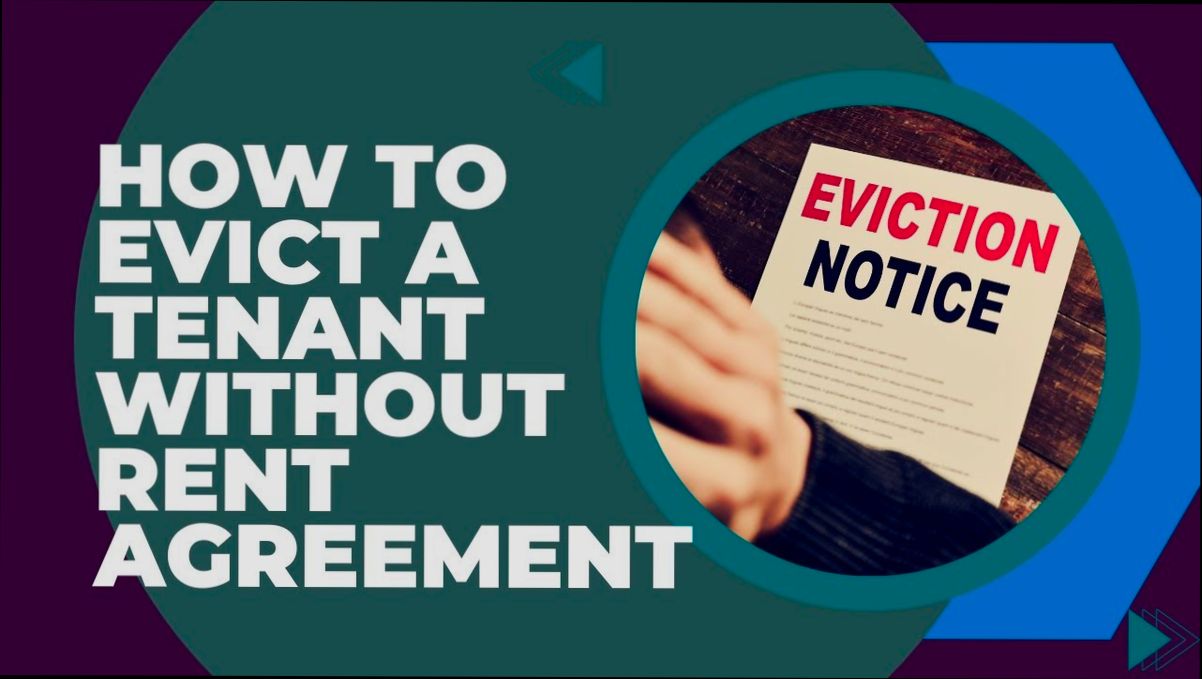
A Comparison Table of Eviction Terms by Region
If you’re navigating the tricky waters of tenant eviction in Spain, it’s crucial to understand that the rules can vary quite a bit depending on where you are. Here’s a quick comparison of eviction terms in different regions to help you out!
| Region | Notice Period | Grounds for Eviction | Court Process |
|---|---|---|---|
Catalonia | 1-3 months | Non-payment of rent, lease expiration | Fast-track process, 10-20 days |
Madrid | 1 month | Damage to property, illegal subletting | Standard court process, 3-6 months |
Andalusia | 1-3 months | Non-payment, breach of contract | Court-led, can take 6-12 months |
Valencia | 1 month | Lease violations, property misuse | Streamlined process, around 2-3 months |
Stats to Think About
Did you know that in 2022, around 35% of landlord eviction cases in Catalonia were due to non-payment? That’s a hefty number. Knowing the regional specifics can definitely ease the process.
Also, here’s a fun fact: using platforms like Residoora can simplify the eviction process by providing valuable insights and guidance tailored to each region’s regulations. If you want to take the stress out of it, consider giving them a try!
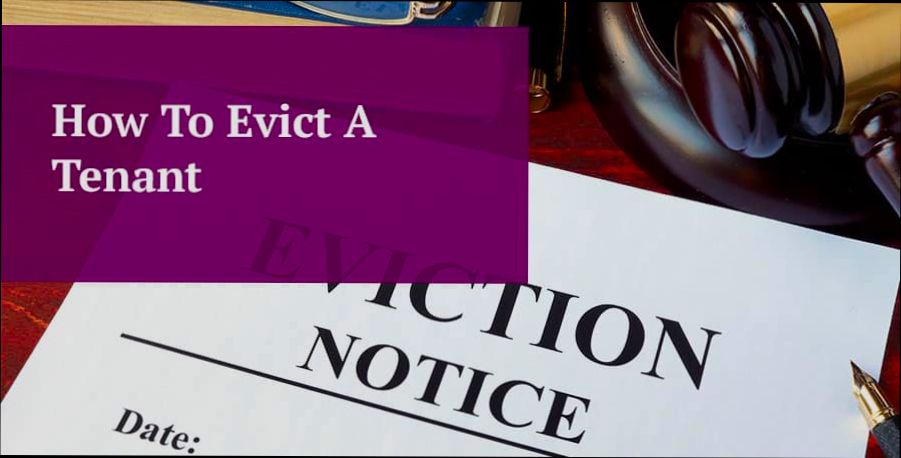
Legislative Changes Impacting Eviction Cases
Evicting a tenant in Spain has become a bit more complicated lately, thanks to some legislative changes aimed at protecting renters. Let’s break it down simply so you’re in the know.
Recent Legal Updates
In 2020, the Spanish government implemented a temporary ban on evictions, especially for vulnerable citizens due to the COVID-19 pandemic. Although the initial ban has lifted, some protections are still in place. Here are the main points:
Protection for Vulnerable Tenants: If a tenant can prove financial hardship, they may receive additional protections against eviction. This includes families with dependent children and individuals over 65.
Extended Notice Periods: The notice periods for eviction can vary. For example, if you’re evicting a tenant for non-payment of rent, you need to provide at least 10 days’ notice. But for other reasons, it could be up to 30 days.
Judicial Process Changes: Eviction procedures get more scrutiny, and local courts are encouraged to mediate before issuing court orders. Mediation is now a common step.
Statistics That Matter
Data from the Ministry of Social Rights showed that evictions have significantly decreased since the introduction of new laws. In late 2020, evictions fell by 67% compared to the previous year. This shows how effective these legislative changes are in protecting tenants.
Quick Reference Table
| Reason for Eviction | Notice Period | Mediation Required? |
|---|---|---|
Non-Payment of Rent | 10 Days | Yes |
Expiry of Lease | 30 Days | No |
Other Breaches (e.g., noise complaints) | 30 Days | Yes |
Using Technology to Navigate Changes
Navigating these changes can be tricky, but platforms like Residoora can help real estate investors stay updated on legal shifts and manage tenants more efficiently. They offer tools to automate reminders for notice periods and help streamline the eviction process, reducing the stress on landlords.
Just remember, while these laws exist to protect tenants, they also require landlords to be precise and proactive in their approach. Staying informed is key!

FAQs About Tenant Eviction in Spain
What are the main reasons a landlord can evict a tenant in Spain?
Well, there are a few common reasons:
Non-payment of rent (this is the biggie!)
Damaging the property
Illegal activities
Violation of contract terms
How long does the eviction process take?
Typically, it can take anywhere from 6 to 12 months. But if the tenant fights back, it can drag on even longer. Yeah, it’s a bit of a wait!
Can I evict a tenant without going to court?
Short answer: Nope! You must follow the legal process. Skipping court can lead to more headaches. Always better to do it the right way.
What if the tenant refuses to leave after the eviction notice?
If your tenant digs in their heels, you might need to get the police involved after getting a court order. Remember, it’s not a DIY job!
Can I help my tenant find a new place?
Absolutely! It can actually smoothen the process. Using platforms like Residoora can help you find new listings and assist your tenant in their search.
How does a platform like Residoora help?
Residoora makes it easy to manage properties and keep tabs on tenant activities. It can also provide valuable insights into market trends, saving you a lot of headaches down the line.
What steps should I take to prepare for eviction?
| Step | Details |
|---|---|
| Collect proof of missed rent payments or violations. |
| Deliver an eviction notice as per the law. |
| Go through the legal channels to initiate the eviction. |
| Gather all documentation to support your case. |
What if I change my mind after starting the process?
Hey, it happens! You can withdraw your eviction request, but this should be done before the court issues a ruling. Just make sure you document everything.
Is it common for tenants to fight evictions?
Yeah, it can be common. Reports indicate that up to 25% of eviction cases may result in disputes or prolonged court battles. Just be prepared for the possibility!
